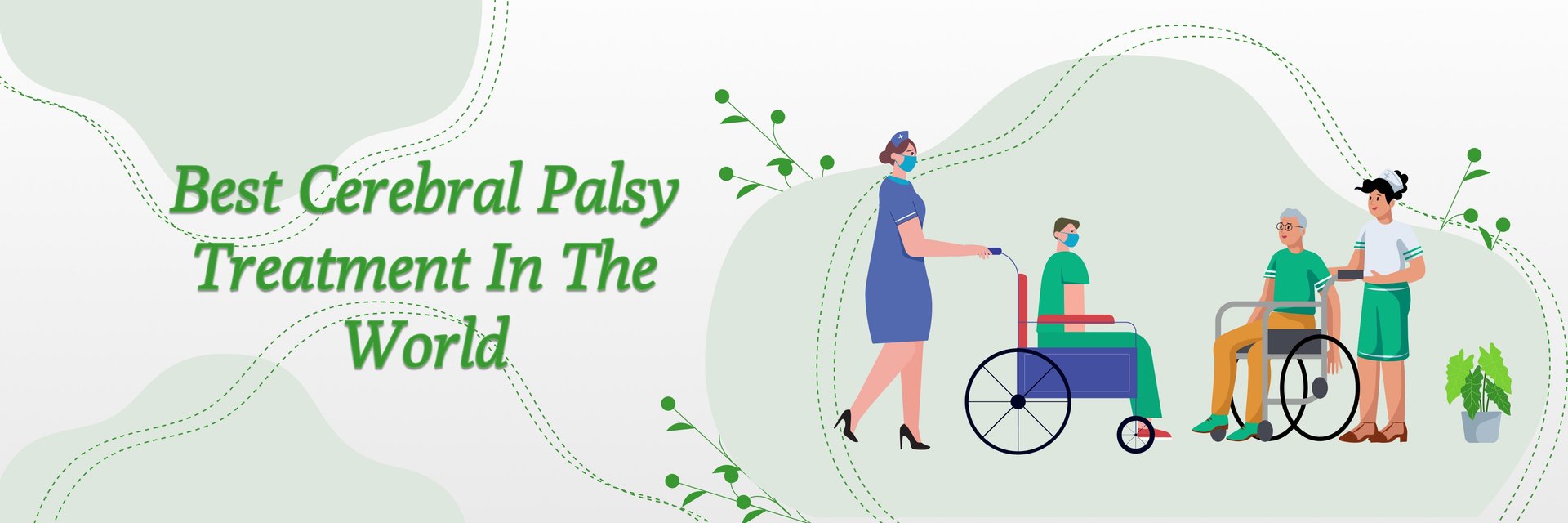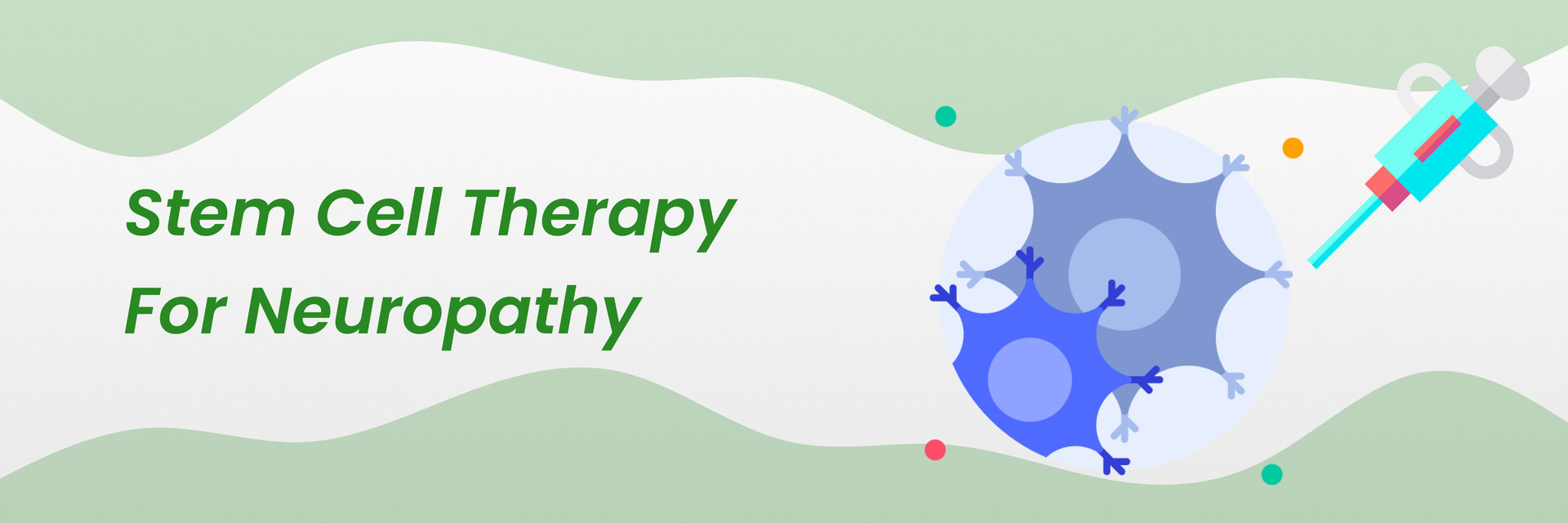
Stem Cell Therapy for Neuropathy, a groundbreaking approach in medical science, is demonstrating significant potential in treating neuropathy, which impacts nearly 6% of the global population. Current research, including over 100 clinical trials, indicates varying success rates from 30-80%, largely dependent on the type and severity of neuropathy being treated. This therapy, though still experimental, is generally considered safe, with some patients experiencing mild side effects such as pain or flu-like symptoms. However, challenges such as high costs and lack of insurance coverage remain. As this innovative treatment continues to develop, it's crucial for those interested to consult with medical professionals and select experienced clinics for the best outcomes.
Neuropathy, also called Peripheral Neuropathy, is a condition where peripheral nerves are damaged. These nerves can be sensory, motor, or autonomic.
It has several causes, the most common of which are:
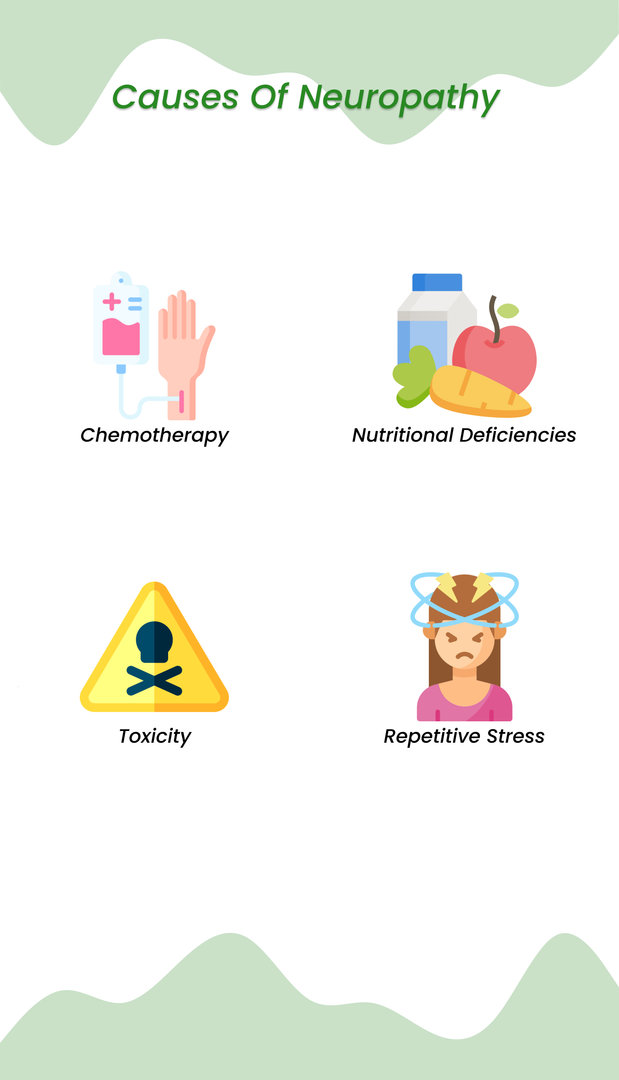
While the causes of this condition are different, the symptoms are usually the same:
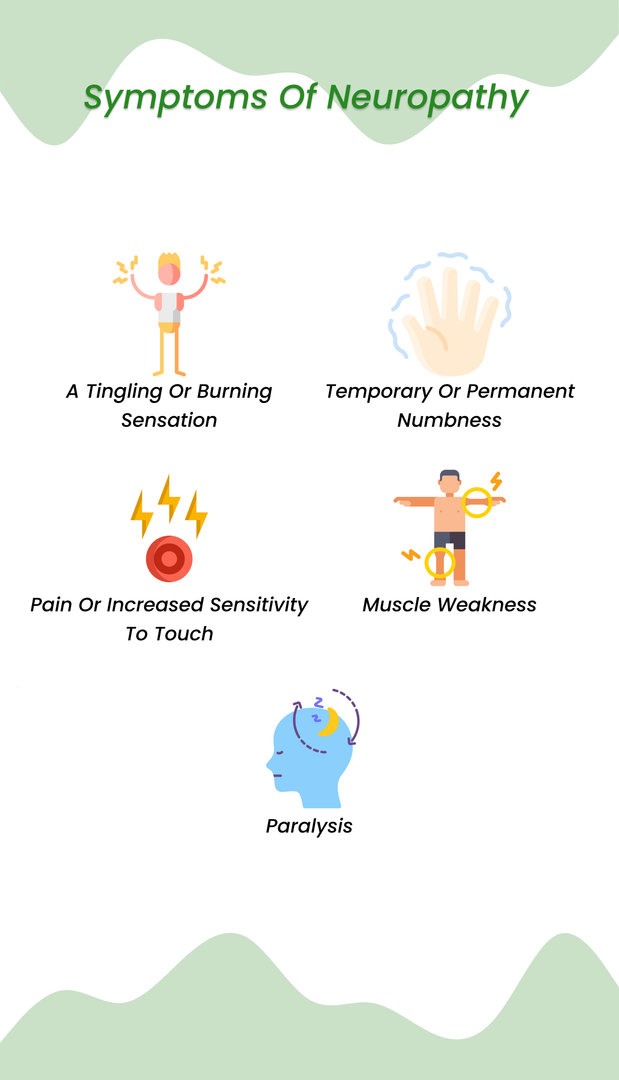
There are several types of neuropathies, but they are most commonly classified as Mononeuropathy, Polyneuropathy, and Distal Symmetric Neuropathy.
It is not easy to diagnose this condition, and several tests might be required.
Some of them are:
Now that we have a basic understanding of this condition, are you curious to know more about how stem cell treatment comes into the picture?
Stem cell treatment is a very recent treatment that has shown encouraging results in treating neuropathy. So far, it is the only treatment that has displayed the potential to repair damaged nerves.
Of course, stem cells for neuropathy are still undergoing clinical trials and are not currently FDA-approved.
Experiencing symptoms of Neuropathy? Your health is too important to ignore – schedule your appointment now for a comprehensive evaluation and personalized care.
Does Stem Cell Therapy for Neuropathy Work?

Can stem cells cure neuropathy?
Let’s first address the main question everyone has come here for.
The short answer is yes.
We’re sure you’re wondering, just how does peripheral neuropathy stem cell treatment work?
To answer this, it’s time to take a short science lesson.
You see, stem cells are immature cells found in our bodies that can differentiate into any tissue.
Sounds great, but how does that help with neuropathy?
Stem cells have numerous wonderful properties. The ones that help treat neuropathy are:
- Repair of damaged nerve cells
- Regeneration of destroyed nerves
- Release of neurotrophic factors, which help re-establish the connection between nerves
- Presence of neuroprotective factors, which protect the newly formed nerve cells from damage
In short, they can repair these damaged nerves at the cellular level and form brand-new nerves, replacing the dead ones.
Amazing, right?
Types of Stem Cells Used to Treat Neuropathy
Researchers have discovered several types of stem cells in our bodies. However, not all of them can be used to treat neuropathy.
The most used stem cells are bone marrow-derived mesenchymal stem cells.
Maximum studies are carried out using these stem cells.
Why? Because they are easily available and very effective.
The other stem cells that have shown some success are adipose-derived, umbilical stem cells, and embryonic stem cells.
It should be noted that embryonic stem cells have major ethical objections and are not allowed in most countries.
Researchers also prefer using the patient’s cells over donor cells, making stem cells even more accessible.
Eligibility
So, exactly who is eligible for stem cell neuropathy?
Well, each clinical study has its specific requirements.
Some of the general ones are:

- Diagnosed neuropathy
- No active infections or diseases
- No extensive medical history
- No previous organ transplant or organ failure
- No history of autoimmune diseases
Benefits/Risks of Stem Cell Therapy for Neuropathy

Like every medical procedure, even stem cell neuropathy treatment has its own set of risks and benefits.
| BENEFITS | RISKS |
|
|
Explore the Benefits and Risks of Stem Cell Therapy for Neuropathy. Take charge of your health and life – contact us today for personalized insights and potential treatment options.
How Much Does Stem Cell Therapy Cost for Neuropathy?
It’s time to examine the effect of stem cell therapy for neuropathic pain on your wallet.
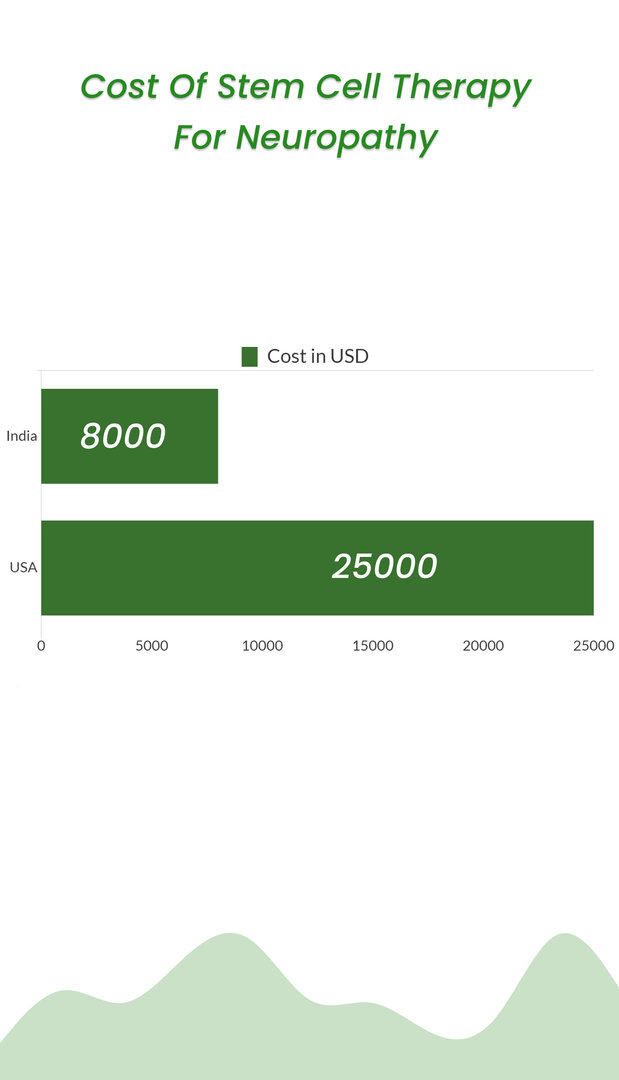
The cost of stem cell therapy for peripheral neuropathy depends on a few factors including:
- The number of cycles required
- The severity of the neuropathy
- The facility you choose to get your treatment at
- The type of stem cells used
In India, stem cell treatment for neuropathy costs 6000 to 8000 USD. This same treatment costs upward of 25,000 USD in the US!
However, it should be kept in mind that since stem cell therapy for nerve damage is still undergoing clinical trials, it is not usually covered by medical insurance.
Stem Cell Therapy for Different Types of Neuropathy
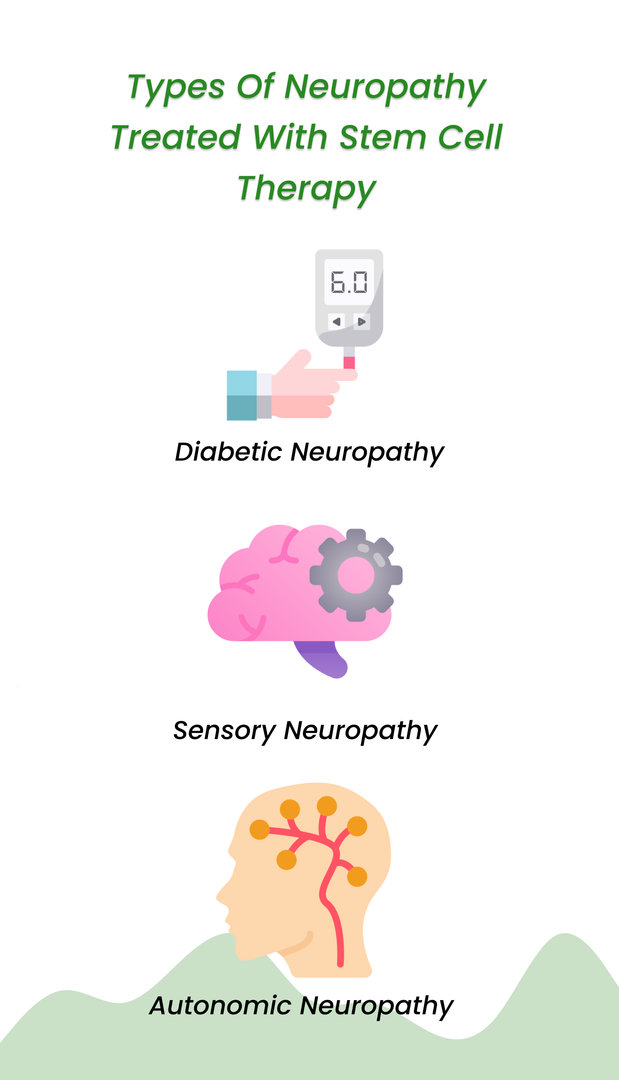
We have already seen that there are numerous types of neuropathies. Not all of them can be treated with stem cells.
We went ahead and made a list of a few common neuropathies to explain how stem cells can treat them.
| TYPE OF NEUROPATHY | HOW STEM CELLS HELP |
| Diabetic Neuropathy |
|
| Sensory Neuropathy |
|
| Autonomic Neuropathy |
|
Procedure

Are you sitting in front of your computer, biting your nails because you think the stem cell therapy for neuropathy procedure will be long and painful?
Take a deep breath. And relax.
Stem cell treatment for peripheral neuropathy is done in three simple steps.
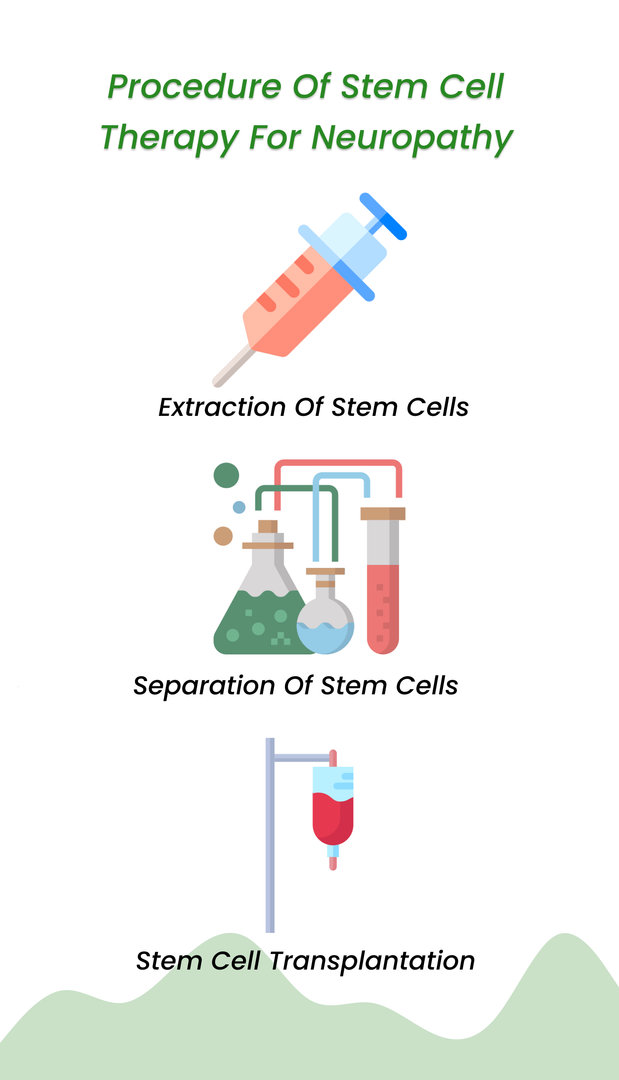
| Extraction of stem cells |
|
| Separation of stem cells |
|
| Stem cell transplantation |
|
As you can see, the whole process can be completed in about eight to nine hours. However, doctors spread it out over two or three days to keep the patient comfortable.
In some cases, a couple of additional days of hospital stay is also required.
Unlock relief with Stem Cell Treatment for Peripheral Neuropathy in three simple steps. Take the first step to recovery – get in touch with us for personalized treatment and embark on your journey to healing.
What to Expect After Stem Cell Therapy for Neuropathy?
Is the recovery period going to be difficult, you ask?
Not at all.
Stem cell therapy requires very little recovery time. The patient is usually given a discharge one or two days after the procedure. They can resume their daily activities one week after the procedure.
Right after the procedure, some patients experience a headache and nausea. However, this clears up on its own in a few hours. Apart from this, no long-term side effects have been reported by any clinical study.
This procedure is one hundred percent safe.

Results

After the procedure, the stem cells usually remain active for a year in our bodies. During this time, they form new nerve cells and repair the damaged ones.
Does this mean that results will only be visible after a year?
Absolutely not.
You will start seeing visible results about three or four weeks after the procedure.
You can expect:
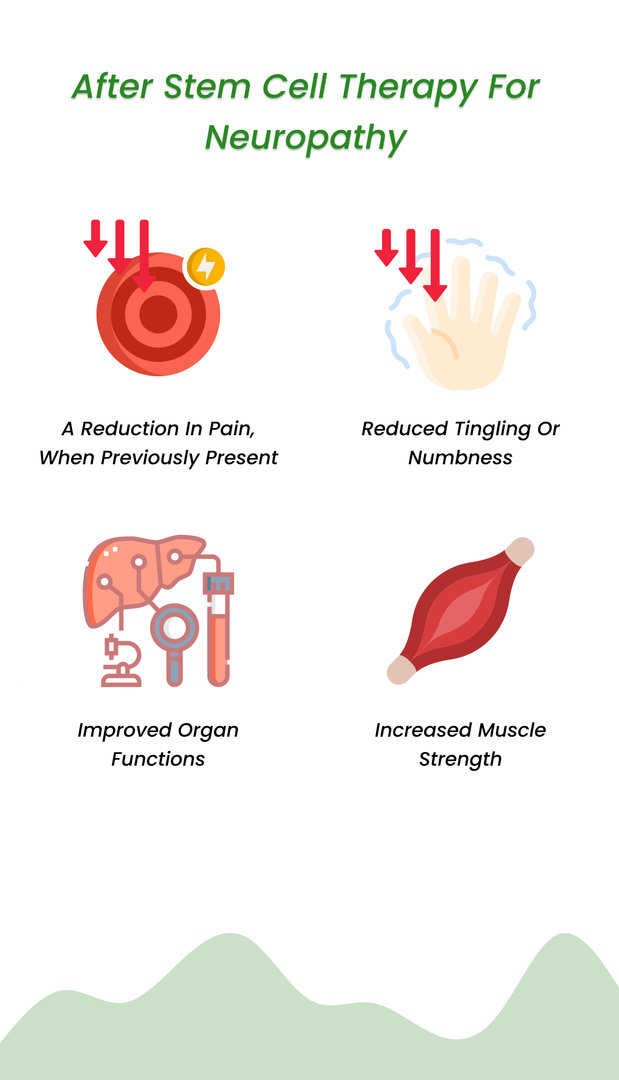
Improvements last for over a year, and some patients have shown a reduction in symptoms at their three-year follow up too.
How Successful is Stem Cell Treatment for Neuropathy?
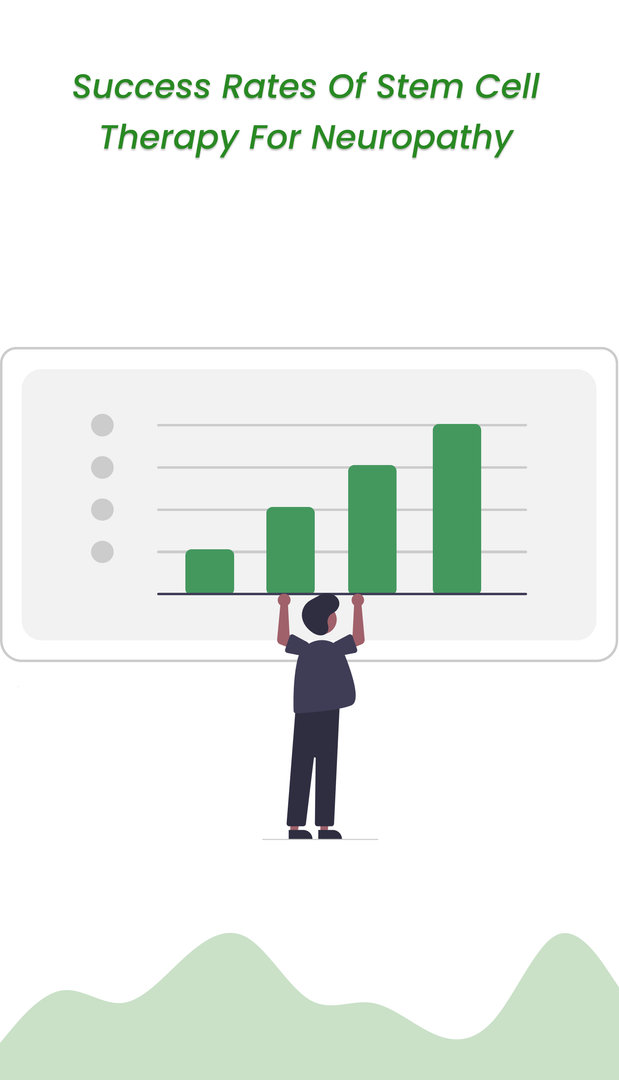
The success rates of stem cell treatment are heavily dependent on considerations like the severity of the neuropathy and the patient’s overall health.
Most studies have reported improvement in over 50% of their patients. These are patients who have failed to get relief from nearly all other treatments.
Wondering about the success of Stem Cell Treatment for Neuropathy? Your well-being is our priority – call us today to book your appointment and explore potential solutions for a healthier life.
Other Treatments Used Along with Stem Cell Therapy for Neuropathy
Did you know that stem cells can also be used in conjunction with other treatments to treat neuropathy?
To date, no cure has been discovered for neuropathy. This is mainly due to the poor regenerative powers of nerve cells.
The main aim of all conventional treatments for neuropathy is to reduce the symptoms. Researchers have been taking the help of stem cells to achieve this goal.
In severe cases, where nerve grafts are required to treat neuropathy, stem cell treatment is also done. The neuroprotective properties of stem cells protect the nerves from further damage after surgery.
A Research Study Explaining Current and Future Scope and Challenges for Stem Cell Therapy for Neuropathy
Stem cell therapy has exhibited promising results that have even taken researchers by surprise. It is the only treatment that treats the neuropathy from its root cause, rather than simply treating the symptoms.
However, a few challenges are yet to be addressed. According to a research paper by Meichen Liu et al., the mode of stem cell delivery still needs to be standardized.
Additionally, more clinical trials are required to study this treatment and get more predictable results.
Nonetheless, they also conclude that stem cell therapy could one day cure neuropathy.
Do you also believe that stem cell therapy is the future of neuropathy treatment?
Reference:
https://www.ncbi.nlm.nih.gov


